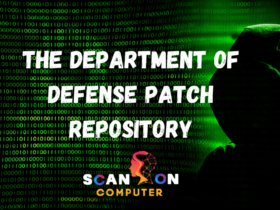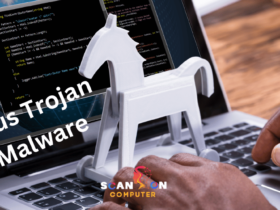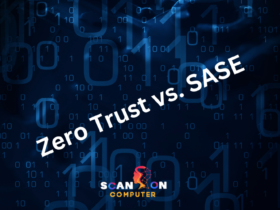Recent cyberattacks that target vulnerabilities in CI/CD pipelines and developer tooling have drawn increased scrutiny from security teams. Two such examples include SolarWinds breach and the Codecov supply-chain attack.
Secure CI/CD systems by restricting access and requiring strong authentication. Lock down repositories and make sure passwords are regularly changed.
What is CI or CD?
CI/CD is a software development pipeline that enables developers to regularly build, test, and deploy applications into production. As an integral part of DevOps, this allows teams to release code more frequently while decreasing application maintenance costs.
However, while Continuous Integration/Continuous Delivery offers many advantages, it also presents significant security risks that must be managed. These vulnerabilities include corrupted code, misconfigurations and exposure of application secrets; thus it’s crucial that best practices for CI/CD security be adhered to to reduce these risks.
Ideal, risk-based vulnerability management should form the core of your Continuous Integration/Continuous Delivery security strategy in order to ensure code integrity and reliability. With this approach, you can avoid common security vulnerabilities as well as data breaches by quickly identifying and patching critical vulnerabilities as they appear.
Implementing access controls is another effective way of protecting CI/CD pipelines against cyber attacks, and will limit any malicious attempts on them by only allowing access to those with authorized accounts. This will limit any impact from attacks even if malicious code enters and executes inside your pipelines.
Difference between CI and CD
CI/CD can offer many advantages, from faster software releases to enhanced developer productivity and frequent updates that enhance the user experience. Unfortunately, without security being built into your CI/CD pipeline it may be easy for flaws to slip past inspection and become part of a product release cycle.
CI/CD processes use automated tools to streamline the building, testing, and deployment of application changes. This ensures that code modifications undergo rigorous tests and validation prior to being deployed into production environments; thus lowering risk.
Continuous Integration/Continuous Delivery can be divided into two steps, Continuous Integration (CI) and Continuous Delivery (CD). CI serves as the initial step in creating deployable versions of applications while CD pushes them automatically into production environments. Without CI/CD, developers would have to manually test and deploy code manually into production, leading to errors being caught quickly before reaching customers and being dealt with effectively.
Components of a CI/CD Pipeline
A continuous integration pipeline (CI pipeline) accepts code changes from developers and automatically builds and tests them before merging them into a repository for production use. CI is repeated daily, weekly or monthly to ensure any newly developed software is continually being deployed into production while being tested for bugs.
CI/CD pipelines help minimize deployment errors by automating testing and building of code, which allows development teams to release updates much more rapidly while assuring customers that new features work as intended and are readily available for customers to use. Furthermore, providing visibility of development process to end-users helps quickly address consumer needs or concerns than traditional processes could.
However, there can be challenges associated with CI/CD. Manual processes may cause delays that lead to unexpected downtime; rollback releases that do not meet expectations may prove challenging; and finally it may prove challenging deploying changes into mission-critical environments such as database infrastructures.
Common CI/CD tools
A Continuous Integration/Continuous Deployment pipeline streamlines the release of software updates by automating tasks such as code integration, build, test and deployment. This allows teams to more frequently release updates without increasing reliability issues or increasing security vulnerabilities.
Jenkins, Buildbot and GitLab are among the most widely used continuous integration/continuous delivery (CI/CD) tools. Each platform boasts an active community, robust ecosystems and excellent integrations – plus they support many languages and development methodologies.
When selecting a CI/CD tool, it’s essential that your team’s needs and existing infrastructure are taken into consideration. Furthermore, consider how it will integrate with other tools in the pipeline, like test automation platforms like BrowserStack Automate; seamless integration is vital in guaranteeing security in any CI/CD pipeline.
Automating the CI/CD pipeline
Automating the process of building, testing and deploying software through a continuous integration/continuous deployment pipeline expedites product availability to customers faster. Regular feedback loops between developers and customers help refine application features for an exceptional user experience.
CI/CD tools help developers track build statuses, allowing teams to monitor progress and identify any issues which require attention. This provides for greater collaboration across departments as well as agile team formation that works efficiently together.
Gaining optimal visibility of a CI/CD pipeline is essential to the efficiency of any process, which is why visualization tools such as GitLab or Codefresh’s real-time notifications about build statuses and deployment results provide such clarity. To do so, using visualization tools to create reports of the state of each component within a pipeline – including test results, build statuses and deployment outcomes can provide team members with clear views into current statuses of each step in the pipeline and their components as well as monitoring overall system performance by monitoring systems such as GitLab or Codefresh that provide real time notifications regarding build statuses or deployment outcomes of any given pipeline is beneficial in keeping teams informed.
What are the benefits of CI/CD?
CI/CD offers numerous advantages, including faster application delivery, automated testing, and continuous feedback loops. This approach can increase developer productivity while simultaneously decreasing development costs by decreasing time-to-production and eliminating manual processes.
CI/CD can also help address security issues by more rapidly detecting bugs and errors, for example when developers merge new code changes onto a central mainline, automated testing through CI/CD will ensure the changes don’t introduce security flaws before being deployed into production. Furthermore, this technology facilitates quicker release cycles by allowing developers to deploy their code more frequently into production.
CI/CD can also help developers improve code quality by encouraging frequent deployment of changes and swift user feedback; this can result in both increased product satisfaction and greater developer fulfillment.
However, continuous integration and continuous delivery (CI/CD) can present security concerns if not properly implemented or monitored, particularly with regards to protecting pipelines from cyber attacks and protecting against them. To minimize these risks, many successful organizations employ DevSecOps practices, which integrate security into core DevOps practices.
Why do you need CI/CD?
CI/CD refers to the practice of automating software delivery and testing, improving developer productivity while speeding up deployment of changes faster while identifying security flaws before going live. Furthermore, this approach enables teams to monitor the health of applications and quickly respond to any problems that may arise.
CI is an automation process that builds, tests and merges new code changes into a shared repository. It helps developers avoid having multiple versions of an application being developed simultaneously which could cause conflicts. Furthermore, this enables small batches of changes being made at once making tracking progress simpler while fixing any issues faster.
Implementing Continuous Integration/Continuous Deployment can be done using scripts or via a platform. A platform offers more control, managing all parts of the pipeline efficiently as well as simplifying setup and maintenance of complex workflows. In addition, leading CI/CD platforms feature role-based access control (RBAC), essential in this age of widely publicized cyber security breaches.
Final Thoughts
CI/CD is an essential process for rapidly creating and releasing software. Teams should remain aware of potential security risks and take measures to address them; such as using AppSealing tools or automating testing processes as well as making sure all pipelines are adequately protected.
Security risks associated with Continuous Integration/Continuous Deployment can range from unauthorised access to source code repositories and build tools, to poor secrets management practices. Attackers could easily exploit hardcoded passwords or leaked secrets from development environments to gain entry to production environments and gain access to sensitive data.
Regular scan and patch of third-party resources and services used in the CI/CD pipeline is important to reducing the risk of breaches that could result in malicious code being deployed into production. IT teams should create an incident response plan in case a breach does occur to ensure all vulnerabilities are identified quickly so they don’t interfere with overall application development processes resulting in downtime for business operations and less impact.










Leave a Reply
View Comments